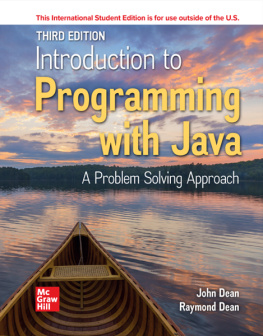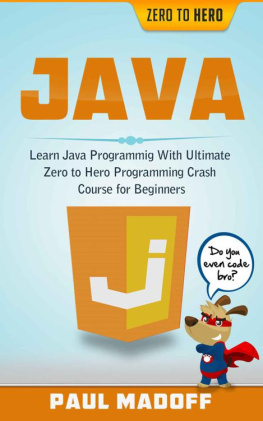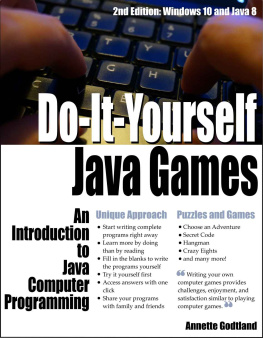Talbot Tim. - Another Introduction to Programming with Java Book
Here you can read online Talbot Tim. - Another Introduction to Programming with Java Book full text of the book (entire story) in english for free. Download pdf and epub, get meaning, cover and reviews about this ebook. genre: Computer. Description of the work, (preface) as well as reviews are available. Best literature library LitArk.com created for fans of good reading and offers a wide selection of genres:
Romance novel
Science fiction
Adventure
Detective
Science
History
Home and family
Prose
Art
Politics
Computer
Non-fiction
Religion
Business
Children
Humor
Choose a favorite category and find really read worthwhile books. Enjoy immersion in the world of imagination, feel the emotions of the characters or learn something new for yourself, make an fascinating discovery.

- Book:Another Introduction to Programming with Java Book
- Author:
- Genre:
- Rating:3 / 5
- Favourites:Add to favourites
- Your mark:
Another Introduction to Programming with Java Book: summary, description and annotation
We offer to read an annotation, description, summary or preface (depends on what the author of the book "Another Introduction to Programming with Java Book" wrote himself). If you haven't found the necessary information about the book — write in the comments, we will try to find it.
Another Introduction to Programming with Java Book covers all the basics of Programming with Java including:
Installing Java and setting up your development environment
Variables and Operators
Flow Control (Loops, Switch and If statements)
Access Modifiers
Functions / Methods
Introduction to Object Oriented Programming
Recursion
ArrayList
Classes and Objects
Error Handling
Inheritance and Polymorphism
Interfaces
Every other chapter, you will encounter some exercises in order to help you grasp the concepts you have been studying up until that point. Finally, there is a larger scale project at the end of the book to bring all your knowledge together
Talbot Tim.: author's other books
Who wrote Another Introduction to Programming with Java Book? Find out the surname, the name of the author of the book and a list of all author's works by series.



![Mark Lassoff [Mark Lassoff] - Java Programming for Beginners](/uploads/posts/book/119362/thumbs/mark-lassoff-mark-lassoff-java-programming-for.jpg)

 If you see this heading then there are some simple exercises for you to do relating to the information you've just read.
If you see this heading then there are some simple exercises for you to do relating to the information you've just read.  If you see this heading then you should take a few moments to study the points following it and make sure you understand them clearly. Similarly to the exercises, these will gradually increase in complexity but I will explain them in each section as clearly as possible. There will be many times I just spam you with pages of code.
If you see this heading then you should take a few moments to study the points following it and make sure you understand them clearly. Similarly to the exercises, these will gradually increase in complexity but I will explain them in each section as clearly as possible. There will be many times I just spam you with pages of code.